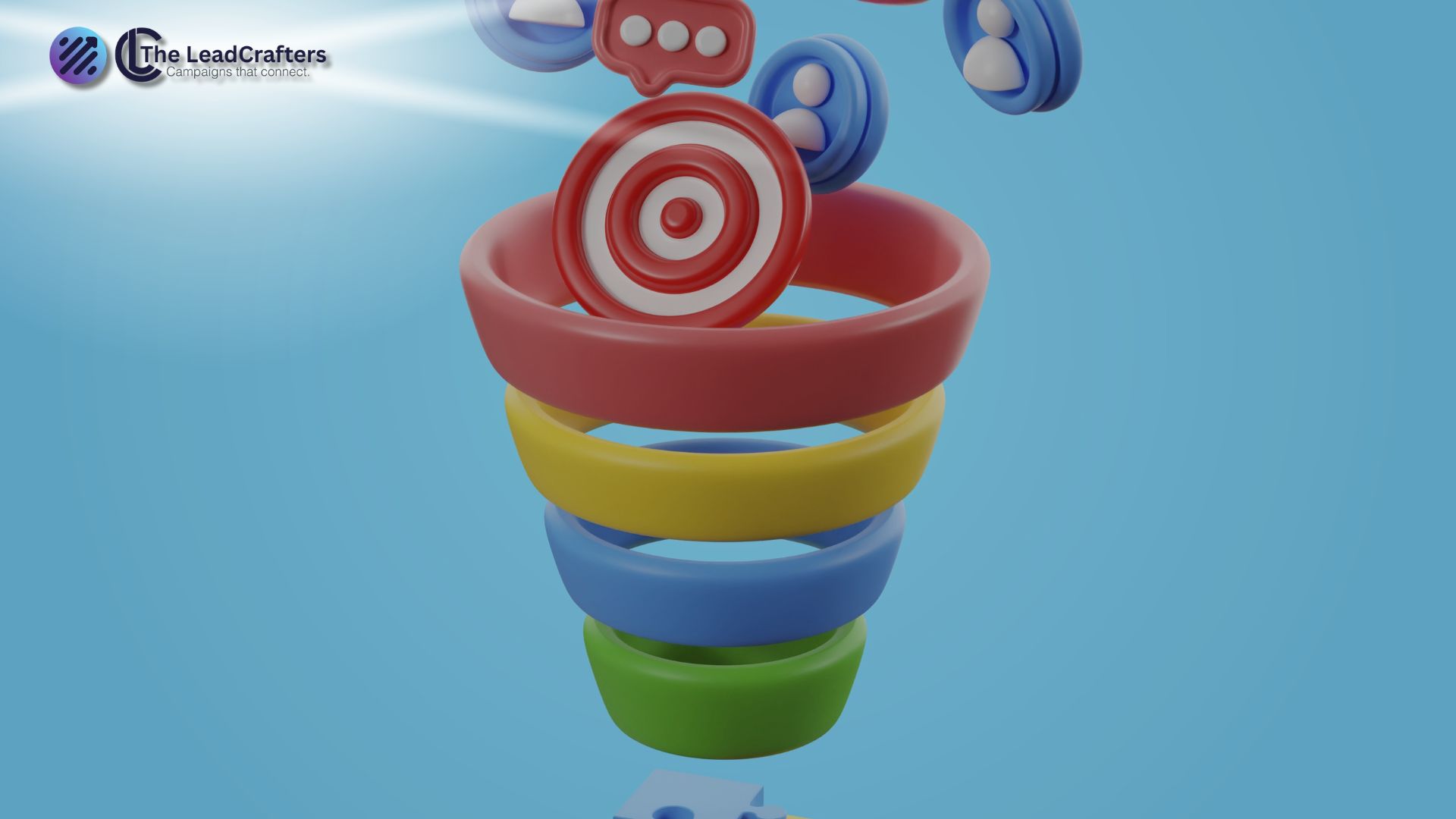Driving quality leads in B2B marketing isn’t about volume—it’s about creating a lead funnel that consistently delivers sales-ready prospects. Today’s buyers are smart, busy, and inundated with choices. If your lead funnel doesn’t nurture, qualify, and engage them at every stage, you’ll not only lose conversion opportunities but also waste valuable marketing resources. So, how do top-performing organizations build B2B lead funnels that actually convert?
This guide breaks down the strategy step-by-step, with actionable examples for IT, Cybersecurity, HR Tech, FinTech, Cloud Services, AI, HealthTech, MarTech, and AdTech companies. Learn how you can adapt these strategies for theleadcrafters.com and see tangible growth in your pipeline.
Understanding the Modern B2B Lead Funnel
Before diving into build tactics, it’s important to define what a B2B lead funnel really is. At its core, a lead funnel is a structured pathway that guides prospects from first interaction to a sales conversation. The funnel typically has three stages:
- Top of Funnel (TOFU): Awareness & Discovery
- Middle of Funnel (MOFU): Engagement & Evaluation
- Bottom of Funnel (BOFU): Decision & Conversion
Successful B2B funnels don’t just filter contacts—they educate buyers, build trust, and qualify intent. Unlike B2C funnels, B2B buyers require more nurturing, and decisions are often made by multiple stakeholders. Your funnel must adapt to these dynamics.
Mapping Your Ideal Customer Profile (ICP)
Every high-converting lead funnel starts with a deep understanding of your ideal customer profile. This isn’t just a list of target company sizes or industries—your ICP should outline:
- Demographics (industry, location, size)
- Firmographics (technology stack, budget range)
- Challenges and pain points
- Decision-makers and influencers
- Buying triggers and timelines
Leveraging ICP data helps you craft messages and offers that resonate. Leading platforms like HubSpot and Gartner stress that funnels tailored to ICPs see significantly better conversion rates.
Building Awareness at the Top of the Funnel (TOFU)
Visibility is your first challenge. Top-performing TOFU tactics include:
- SEO-optimized blog content targeting industry trends, use cases, and pain points.
- LinkedIn thought leadership posts for niche verticals.
- Guest articles or expert roundups on authoritative sites, such as Content Marketing Institute.
- Research-driven ebooks, whitepapers, or checklists tailored to your buyer personas.
At TOFU, don’t sell—help. Answer questions, solve problems, and position your brand as a trusted advisor. Case in point: IT companies can publish guides on cloud migration best practices, while healthtech firms who educate on HIPAA compliance challenges build early trust.
Driving Engagement in the Middle of the Funnel (MOFU)
Once prospects are aware of you, MOFU activities start qualifying and nurturing them. Effective strategies include:
- Automated email nurturing sequences using platforms like Mailchimp or ActiveCampaign.
- Educational webinars or live demos.
- Interactive product tours or comparison sheets.
- Persona-based email campaigns with value-driven messaging.
- Social retargeting campaigns showcasing success stories or case studies.
Content at the MOFU stage should answer common objections, demonstrate expertise, and paint a clear ROI picture. Fintech companies, for example, can offer calculators showing cost savings from their solution, while martech vendors might provide email campaign benchmarks.
Qualifying and Converting at the Bottom of the Funnel (BOFU)
BOFU is where sales conversations start happening. Conversion-focused tactics include:
- Personalized demos addressing the prospect’s specific needs.
- One-to-one consultations or strategy sessions.
- Detailed proposals or ROI breakdowns.
- Customer testimonials and third-party reviews, e.g., via G2.
- Clear call-to-actions (CTAs) for demo requests and pricing inquiries.
For best results, align sales and marketing teams so that handoffs are seamless. Use CRM data to score leads and trigger sales outreach only when prospects exhibit buying signals (form completions, demo bookings, etc.).
Key Funnel Elements for Major Verticals
Here’s how to tailor funnel elements for core B2B sectors:
IT & Cloud Services
- TOFU: Publish cloud migration success stories, integration checklists, and ROI guides.
- MOFU: Offer free cloud-readiness assessments and security webinars.
- BOFU: Personalize demos highlighting compatibility with legacy systems.
Cybersecurity
- TOFU: Create threat landscape reports and regulatory compliance content.
- MOFU: Run risk analysis workshops and email sequences around common vulnerabilities.
- BOFU: Present customer stories that prove reduced breach risk and faster compliance audits.
HR Tech
- TOFU: Blog about remote onboarding best practices and employee retention tactics.
- MOFU: Host virtual roundtables for HR managers.
- BOFU: Offer tailored demo environments for different HRIS platforms, share peer ROI statistics.
FinTech
- TOFU: Educate on regulatory shifts and payment innovation.
- MOFU: Share case studies on cost optimization.
- BOFU: Provide customized ROI projections, customer reviews, and direct CTO consultations.
AI & HealthTech
- TOFU: Explain real-world AI use cases in healthcare via blogs and webinars.
- MOFU: Host tutorials for non-technical buyers.
- BOFU: Highlight results with before-and-after patient case studies and compliance evidence.
MarTech & AdTech
- TOFU: Build guides to evolving ad platforms and cookie-less marketing.
- MOFU: Share interactive ROI calculators or campaign performance benchmarks.
- BOFU: Showcase conversion uplift through client testimonials and real-time demo dashboards.
Integrating Technology to Accelerate Lead Gen
Whatever your vertical, technology is an enabler. Modern B2B funnels depend on:
- CRM software (e.g., Salesforce or HubSpot CRM) for tracking touchpoints and scoring leads.
- Marketing automation for nurturing, triggered emails, and audience segmentation.
- Analytics platforms for channel attribution and funnel performance tracking. Use tools like Google Analytics or Hotjar to identify conversion bottlenecks.
- AI-powered chatbots for qualifying leads and offering personalized content at scale.
Businesses should also leverage integrations, such as syncing website forms with CRM, connecting webinar registrations to nurture flows, and using ABM (account-based marketing) platforms for tailored outreach.
Measuring Funnel Success
How do you know if your funnel works? Define these key metrics:
- Lead conversion rate: Percentage of leads moving from stage to stage.
- Time to conversion: How long it takes to turn a prospect into a buyer.
- Source attribution: Which channels or campaigns generate the highest quality leads.
- Pipeline velocity: The speed with which leads move through each stage.
- Customer acquisition cost (CAC) and lifetime value (LTV): Key revenue indicators.
Setting up regular funnel analytics reviews is essential for continuous improvement. Platforms like Databox enable dynamic dashboards for performance monitoring.
Proven Funnel Hacks: Real Case Studies
Consider these examples:
- A cloud services provider increased demo bookings by 40% after adding an interactive ROI calculator to its MOFU email sequence.
- A healthtech startup doubled MQL-to-sales conversion by segmenting nurture tracks for clinical vs. administrative buyers.
- An HR tech firm saw sales pipeline growth after launching a webinar series featuring customer-led panels as MOFU content.
Each case reinforces the need to optimize for buyer journeys—not just lead volume.
Tips for High-Converting Landing Pages
Landing pages are crucial touchpoints for every funnel stage. Best practices include:
- Clear, relevant headlines addressing buyer pain points.
- Concise copy, value-rich visuals, and trust signals (badges, testimonials).
- Minimal form fields to reduce friction.
- Strong, actionable CTAs (“Book a Demo”, “Download the Guide”).
- Page speed and mobile responsiveness for all devices.
For examples, look to Unbounce for inspiration and best-in-class design tips.
Aligning Sales and Marketing for Maximum Impact
A high-performing lead funnel depends on close alignment between sales and marketing teams. Effective tactics:
- Create joint SLAs for lead handoff.
- Conduct regular pipeline review meetings.
- Use shared tooling for visibility and accountability.
- Employ lead scoring frameworks with input from both teams.
According to Forrester, organizations with strong alignment see up to 36% higher customer retention and 38% more sales win rates.
Optimizing Lead Funnel Over Time
Funnel building is not a set-and-forget process. Regular optimization using A/B testing, feedback loops, and ongoing analytics review is critical. Schedule quarterly funnel audits focusing on:
- Drop-off points between stages.
- Segment-specific messaging and offer performance.
- Alignment with current ICPs as business evolves.
- Tech stack integrations and automation.
Final Thoughts
Building a B2B lead funnel that actually converts requires more than plugging in generic tactics. It takes ICP research, targeted content, multi-channel engagement, and continuous optimization. Tailor your approach for each vertical, integrate technology for scale, and measure what matters. When done right, your funnel becomes a growth engine—delivering consistent sales opportunities and compounding business success.
Ready to transform your demand generation? Reach out to The Lead Crafters and accelerate your B2B pipeline with custom strategies that drive results.



